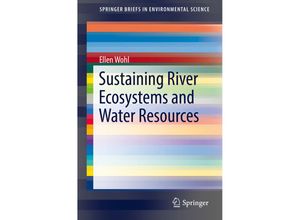This work is designed to broaden the scope with which many people regard a river. Rivers are
commonly regarded from a very simplistic perspective as conduits for downstream flows of water.
In this context it may be considered acceptable and necessary to engineer the channel to
either facilitate such flows (e.g. channelization levees) or limit flows and store water
(e.g. water supply reservoirs flood control). The book presents the concept of a river as a
spatially and temporally complex ecosystem that is likely to be disrupted in unexpected and
damaging ways by direct river engineering and by human activities throughout a drainage basin.
Viewing a river as a complex ecosystem with nonlinear responses to human activities will help
to promote a more nuanced and effective approach to managing river ecosystems and to sustaining
the water resources that derive from rivers. In this context water resources refers to
ecosystem services including water supply water quality flood control erosion control and
riverine biota (e.g. freshwater fisheries). Chapters in this book draw extensively on existing
literature but integrate this literature from a fresh perspective. General principles are
expanded upon and illustrated with photographs line drawings tables and brief site-specific
case studies from rivers around the world.

